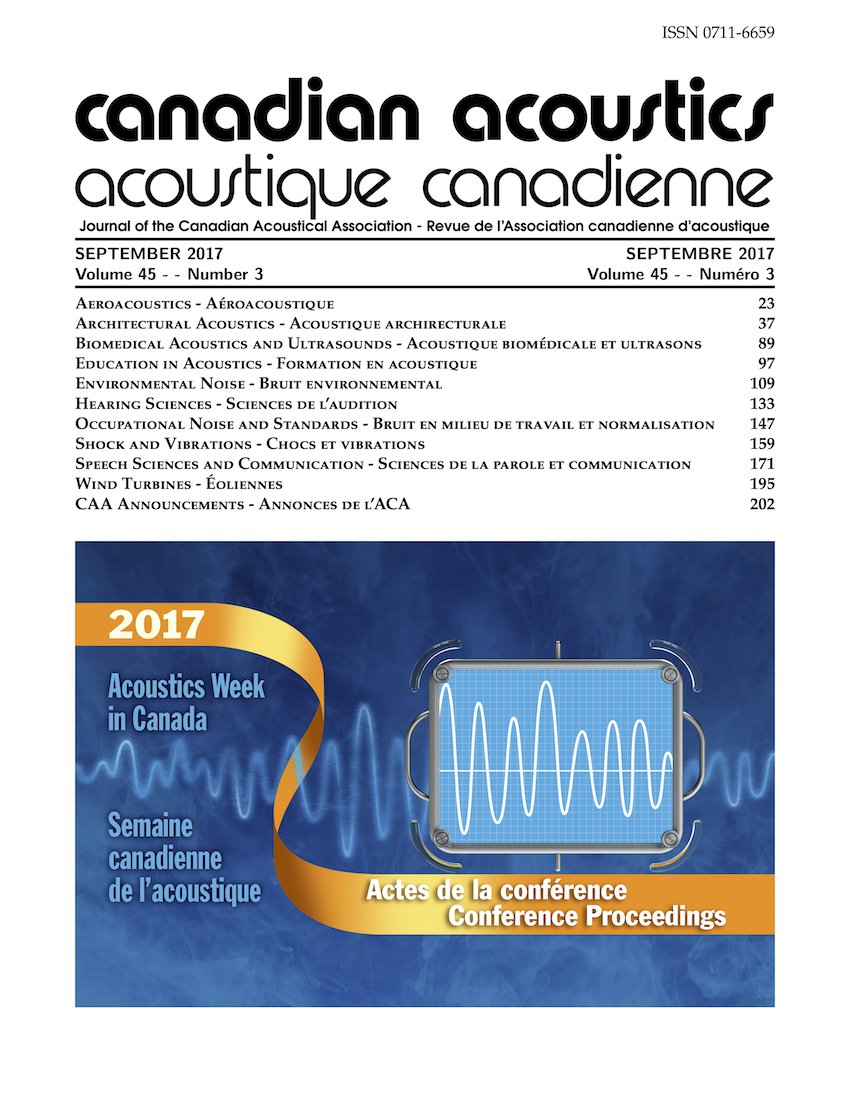Surface Dipole Strength Generated by Cylindrical Struts
Abstract
The purpose of this work was to further establish the viability of the Causality Correlation Technique as a diagnostic tool for the treatment of noise problems. Acoustical dipole radiation can be generated by obstructing a subsonic flow with a rigid strut, if the strut exerts fluctuating forces on the fluid. Such forces would be the forces of reaction arising from the unsteadiness in the local flow and would form a distribution of acoustical dipole sources over the surface of the strut. For the experiments reported herein, a subsonic flow issues from a circular nozzle which is 3.8×10-2 m in diameter. The ‘quiet’ air jet operates at an exit Mach number of .217. The exit velocity is 72 m/s and is approximately uniform over the exit plane. The cylinder model is stationed at the potential core of the jet the Reynolds number is 6.3×104 (based on cylinder diameter and exit velocity). The ‘Dipole Radiation Intensity (DRI)’ is a uniquely defined and measurable quantity that is intimately related to the classical dipole. The ‘spatial distribution’ of the DRI can be constructed on a surface using the Causality Correlation Technique (see Siddon). The ‘DRI distribution’ is constructed on the surface of the rigid cylindrical strut. A diagnosis is made of the aerodynamic noise generation mechanisms using the said distribution. The far field SPL originating from the surface exclusively is predicted from the integrated DRI distribution. For laminar incident flow the predicted SPL is (69.3 ± 2.3 dB). This may be compared with an overall SPL of (70.1±.5 dB) which was directly measured.
Additional Files
Published
How to Cite
Issue
Section
License
Author Licensing Addendum
This Licensing Addendum ("Addendum") is entered into between the undersigned Author(s) and Canadian Acoustics journal published by the Canadian Acoustical Association (hereinafter referred to as the "Publisher"). The Author(s) and the Publisher agree as follows:
-
Retained Rights: The Author(s) retain(s) the following rights:
- The right to reproduce, distribute, and publicly display the Work on the Author's personal website or the website of the Author's institution.
- The right to use the Work in the Author's teaching activities and presentations.
- The right to include the Work in a compilation for the Author's personal use, not for sale.
-
Grant of License: The Author(s) grant(s) to the Publisher a worldwide exclusive license to publish, reproduce, distribute, and display the Work in Canadian Acoustics and any other formats and media deemed appropriate by the Publisher.
-
Attribution: The Publisher agrees to include proper attribution to the Author(s) in all publications and reproductions of the Work.
-
No Conflict: This Addendum is intended to be in harmony with, and not in conflict with, the terms and conditions of the original agreement entered into between the Author(s) and the Publisher.
-
Copyright Clause: Copyright on articles is held by the Author(s). The corresponding Author has the right to grant on behalf of all Authors and does grant on behalf of all Authors, a worldwide exclusive license to the Publisher and its licensees in perpetuity, in all forms, formats, and media (whether known now or created in the future), including but not limited to the rights to publish, reproduce, distribute, display, store, translate, create adaptations, reprints, include within collections, and create summaries, extracts, and/or abstracts of the Contribution.


